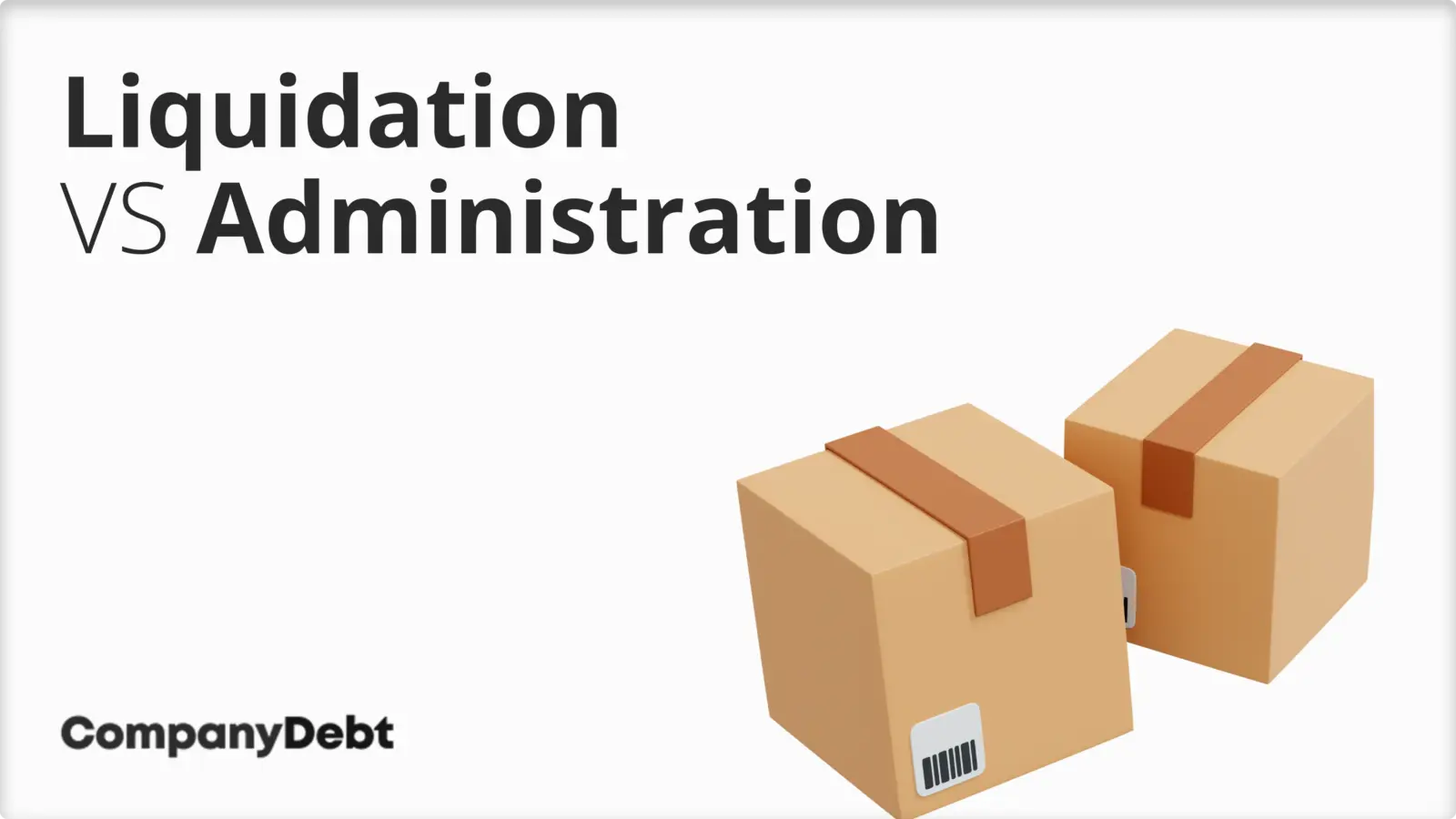
Liquidation vs Administration
What is the Difference Between Liquidation and Administration?
Liquidation and administration are two distinct insolvency processes that a struggling business may consider as a means to resolve its financial difficulties. Both aim to deal with insolvency, but their methods and outcomes differ.
Liquidation is the process of closing a company, selling its assets, and distributing the proceeds to creditors[1]Trusted Source – GOV.UK – Liquidation and insolvency . In contrast, administration aims to rescue the company as a going concern or achieve a better outcome for creditors than liquidation[2]Trusted Source – GOV.UK – Put your company into administration.
What is Liquidation?
Liquidation is the formal process of winding up a company’s affairs by liquidating its assets to settle outstanding debts. Following the asset sale, the company is officially dissolved, ending its existence.
This process safeguards creditors’ interests by maximising the return on their debts.
Liquidation can be classified into two primary forms: compulsory liquidation, instigated by a court order, and voluntary liquidation, initiated by the company’s directors themselves.
What is Administration?
Administration focuses on the company’s preservation and recovery. It’s only appropriate for large companies and is often used -for example, with football clubs – where the company is a nationally recognised brand that is considered too big to fail.
In this process, an insolvency practitioner assumes control of the business with dual objectives: to salvage the company as a going concern or to secure a more favourable outcome for creditors than immediate liquidation would allow.
Administration can serve as a precursor to the company’s restructuring, the sale of the business to new owners via a pre pack, or, if recovery proves unfeasible, a systematic and controlled liquidation.
| Administration | The primary aim of an administration is to help a company repay its debts and escape insolvency whenever possible |
| Liquidation | The process of liquidation describes the sale of company assets to repay creditors before dissolving the company completely |

Can a Liquidation Follow an Administration?
Yes, liquidation can follow administration, but it is not the only possible outcome.
- Should sufficient assets remain during administration, a Creditors’ Voluntary Liquidation ensures a fair distribution to unsecured creditors. A court-appointed liquidator oversees this process.
- In some cases, further investigation into the director’s actions might be necessary after the administration concludes. This could trigger a Compulsory Liquidation, as could creditor rejection of restructuring proposals.
- A third possibility is a pre-pack administration. This fast-tracks the sale of your business to a new owner or the existing directors under a new entity. Provided the necessary funding is secured, this approach can ensure a seamless transition of assets and ongoing contracts.
- Finally, distressed businesses can explore various financing solutions to regain stability and possibly even thrive post-administration.
Need Advice on Whether Liquidation or Administration is the Right Choice?
Ultimately, the choice between liquidation and administration depends on a range of factors specific to your business, including its size, financial position, and future prospects. By seeking professional advice and carefully weighing your options, you can choose the path that offers the best outcome for your company, your employees, and your creditors.
If you need help, the licensed insolvency practitioners at Company Debt are here for a free consultation, where we’ll take time to understand your specific company situation.
You can reach us via live chat, email at info@companydebt.com, or phone at 0800 074 6757. We’ve helped thousands of directors navigate company debt.
FAQs on Liquidation vs Administration
Can My Business Operate During Administration?
Yes, businesses often continue to operate during administration. The administrator’s aim is to keep the business running while exploring options for restructuring or sale, potentially preserving jobs and the company’s value.
Is It Possible to Choose Administration After Starting Liquidation?
Generally, once a liquidation process begins, shifting to administration is not possible. The decision between the two should be made considering the business’s financial situation and long-term goals.
Is It Possible to Exit Administration Without Going into Liquidation?
Yes, it is possible to exit administration without liquidating. If the administration process successfully restructures the company’s debts and operations, or if a suitable buyer is found, the company can continue trading.
What’s the First Step in Choosing Between Liquidation and Administration?
The first step is to consult with an insolvency practitioner who can assess your company’s financial situation and advise on the best course of action. This decision will depend on various factors, including the company’s viability and the likelihood of repaying debts.
How Are Employees Affected in Administration vs. Liquidation?
In administration, there may be an attempt to preserve jobs, especially if the business continues to operate or is sold as a going concern. In liquidation, the company ceases operations, typically resulting in all employees being laid off, although some may be retained by a new owner if parts of the business are sold.
The primary sources for this article are listed below, including the relevant laws and Acts which provide their legal basis.
You can learn more about our standards for producing accurate, unbiased content in our editorial policy here.
- Trusted Source – GOV.UK – Liquidation and insolvency
- Trusted Source – GOV.UK – Put your company into administration







